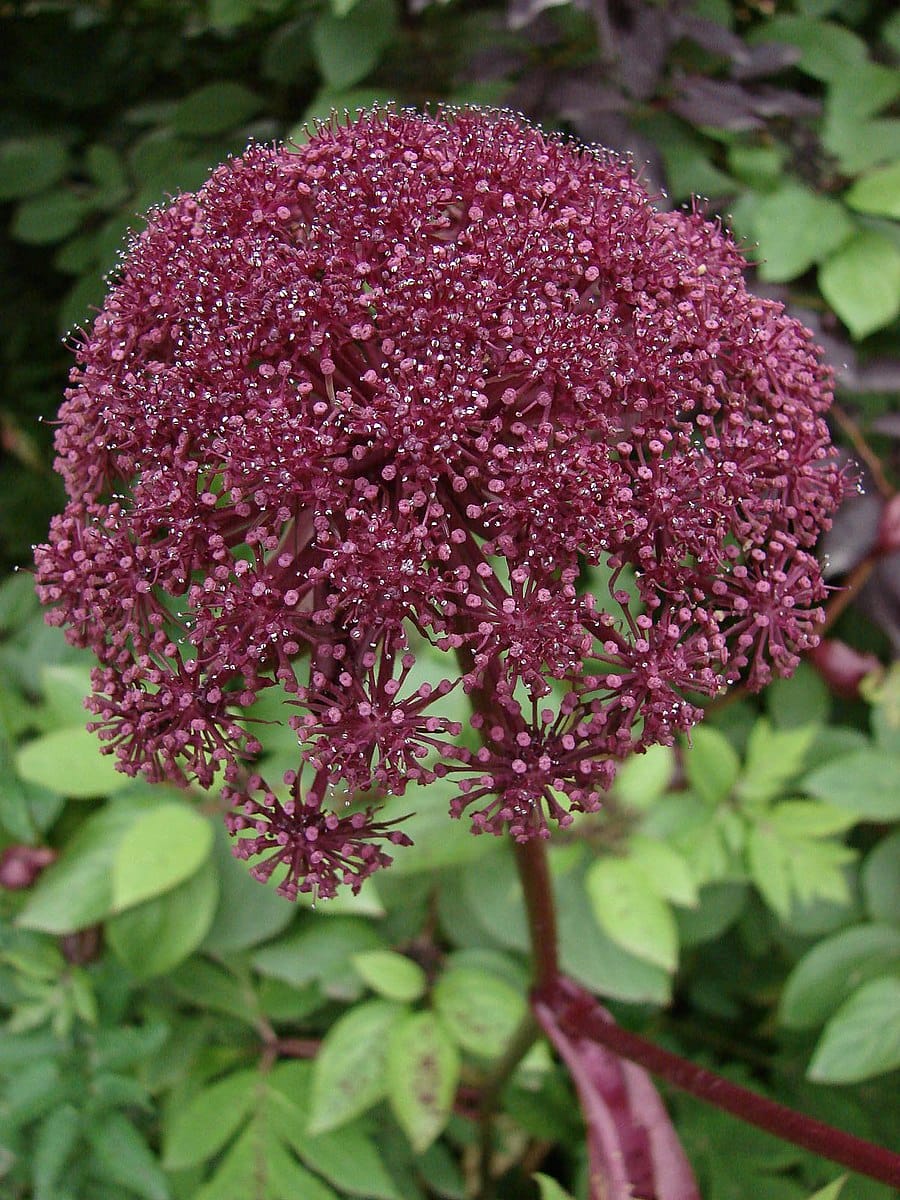Angelica gigas, Korean Angelica
Gigantic Angelica, Korean Dang GuiChao Xian Dang Gui (TCM)
 Angelica gigas
Angelica gigas(Photo by Emma Forsberg) (Wikimedia)
Botanical name:
Angelica gigas
Used similarly to Dang Gui, but is not synonymous.
Parts used:
Root
Temperature & Taste:
Warm, dry. Pungent
Classification:
Uses:
1. Moves the Blood, Regulates Menstruation:
-Amenorrhea, Dysmenorrhea, Irregular Menstruation
-Menopause
2. Moves the Blood, Resolves Masses:
-commonly used in Cancer therapy: Prostate, Lung, Breast, Colon, Bladder, Sarcoma, Myeloma, Leukemia
-reduces proliferation and angiogenesis, increases apoptosis
-synergistic with Chemotherapy such as Doxorubicin
2. Benefits Liver, Settles Wind:
-Joint pain
-beneficial in Memory loss and improves cognition
Dose:
Decoction: 3–9 grams (larger doses have been used for Cancer)
Powder: 1–3 grams
Substitute:
Dang Gui when used for gynecological effects.
Comment:
Angelica gigas is classed as a type of Dang Gui (Angelica sinensis) in TCM, and is commonly used in Korea. However, its red color signifies a stronger affinity for moving the blood and it is also regarded as settling Wind. More recently it has been widely used in Korea in Cancer therapy.
Main Combinations:
1. Cancer:
i. of the Prostate, Ovary or Breast, Angelica gigas (2 parts) Aconitum Fu Zi, Ginger (1 part each). This is a Korean formula found effective in a number of Cancer cell lines; see Research below)
ii. Solid Cancers (various including Prostate), Angelica gigas, Astragalus Huang Qi, Trichosanthes Gua Lou Zi (equal parts) (See research here)
2. Impotence, Male Infertility, Angelica gigas with Epimedium Yin Yang Huo
3. Memory loss:
i. Angelica gigas, Calamus, Frankincense
ii. Angelica gigas, Saururus chinensis, Schisandra Wu Wei Zi (this has been studied)
4. Gynecological use: see Dang Gui
Major Formulas:
Cautions:
None noted
